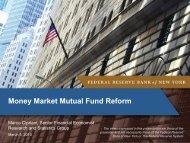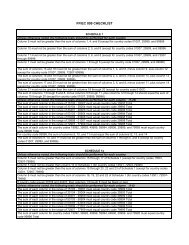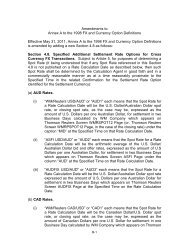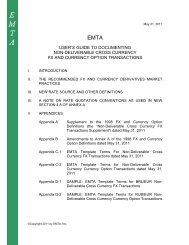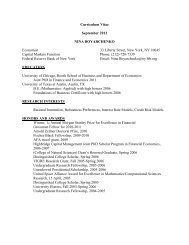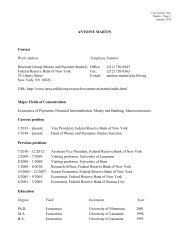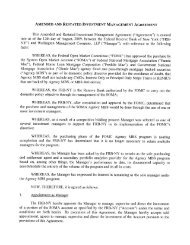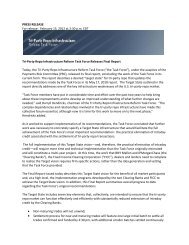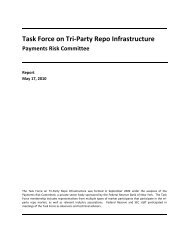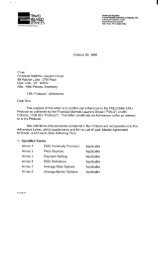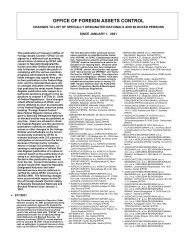Residential Foreclosures in the City of Buffalo, 1990-2000 - Federal ...
Residential Foreclosures in the City of Buffalo, 1990-2000 - Federal ...
Residential Foreclosures in the City of Buffalo, 1990-2000 - Federal ...
Create successful ePaper yourself
Turn your PDF publications into a flip-book with our unique Google optimized e-Paper software.
• a brief evaluation <strong>of</strong> <strong>the</strong> economic context <strong>in</strong> which <strong>the</strong> rise <strong>in</strong> foreclosures took<br />
place,<br />
• an assessment <strong>of</strong> <strong>the</strong> trend and spatial distributions <strong>of</strong> foreclosures,<br />
• a descriptive analysis <strong>of</strong> foreclosures <strong>in</strong> <strong>2000</strong> based on <strong>the</strong> socioeconomic and<br />
hous<strong>in</strong>g characteristics <strong>of</strong> <strong>the</strong> affected neighborhoods,<br />
• a descriptive analysis <strong>of</strong> foreclosures <strong>in</strong> <strong>2000</strong> based on lender characteristics and loan<br />
type, and<br />
• an exam<strong>in</strong>ation <strong>of</strong> borrower circumstances at foreclosure.<br />
We study <strong>the</strong> <strong>1990</strong>-<strong>2000</strong> period for several reasons. First, <strong>the</strong> start<strong>in</strong>g and end<strong>in</strong>g<br />
dates match decennial census years, which facilitates our analysis <strong>of</strong> neighborhood<br />
socioeconomic and hous<strong>in</strong>g characteristics. Second, <strong>the</strong> period approximately co<strong>in</strong>cides<br />
with <strong>the</strong> previous bus<strong>in</strong>ess cycle, which enables us to track foreclosures over an<br />
economic recession and an expansion. Third, we believe that a ten-year period <strong>of</strong>fers a<br />
sufficient time frame from which to obta<strong>in</strong> a good sense <strong>of</strong> foreclosure trends.<br />
To assess <strong>the</strong> characteristics <strong>of</strong> foreclosures by location and to obta<strong>in</strong> an adequate<br />
sampl<strong>in</strong>g <strong>of</strong> foreclosures, we divide <strong>Buffalo</strong> <strong>in</strong>to eight study areas (Table 1) based on<br />
twelve city-def<strong>in</strong>ed plann<strong>in</strong>g communities. 3<br />
Table 1<br />
<strong>Buffalo</strong> Communities and Their Socioeconomic Characteristics<br />
Average Household Income M<strong>in</strong>ority Population<br />
Percent<br />
<strong>of</strong> MSA<br />
Percentage Po<strong>in</strong>t<br />
Change<br />
3 The twelve plann<strong>in</strong>g communities are Central Bus<strong>in</strong>ess District, West Side, Riverside, North <strong>Buffalo</strong>,<br />
Elmwood, North East, East Delavan, East Side, South <strong>Buffalo</strong>, <strong>Buffalo</strong>-River, Ellicott, and Masten.<br />
11<br />
Percentage<br />
Po<strong>in</strong>t Change<br />
<strong>1990</strong>-<strong>2000</strong><br />
1999 1989-1999<br />
Percent<br />
<strong>2000</strong><br />
North <strong>Buffalo</strong>-Elmwood 91 -16 23 9<br />
South <strong>Buffalo</strong>-River 78 -1 6 3<br />
North East 74 -3 71 20<br />
Riverside 63 -3 18 11<br />
East Delavan 63 1 85 16<br />
West Side-Central 63 3 45 16<br />
Ellicott-Masten 59 8 87 -2<br />
East Side 50 -4 43 16<br />
<strong>City</strong> <strong>of</strong> <strong>Buffalo</strong> 70 -2.1 45 9<br />
<strong>Buffalo</strong>-Niagara MSA 100 N/A 16 3<br />
Source: U.S. Bureau <strong>of</strong> <strong>the</strong> Census, "Census <strong>of</strong> Population and Hous<strong>in</strong>g."



